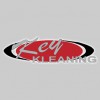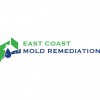Our top quality mold inspection, remediation, and clean up service has successfully addressed microbe contaminated interior structures, such as walls, ceilings, and floors, as well as HVAC systems. We first conduct an investigation to identify and eliminate indoor air quality problems. We examine your property for signs of "sick building syndrome" - mold, mildew, and other fungal growth conditions that may lead to or contribute to respiratory illness, or other distress.
Remediation methods include taking site and client history, inspection of the property, building, and its mechanical systems. Prior to any mold remediation, our remediation technicians carefully build containment structures. This seals off the contaminated area and prevents the mold spores and thus the contamination from spreading. Other significant steps in our mold remediation and clean up process include: HEPA vacuuming, disinfecting, sealing, and documenting all of our findings.
In many instances, we are also asked to remove and dispose of mold, fungi, or mildew contaminated materials, such as carpeting, walls, flooring, ceiling tiles, furnishings or construction debris.
Remediation methods include taking site and client history, inspection of the property, building, and its mechanical systems. Prior to any mold remediation, our remediation technicians carefully build containment structures. This seals off the contaminated area and prevents the mold spores and thus the contamination from spreading. Other significant steps in our mold remediation and clean up process include: HEPA vacuuming, disinfecting, sealing, and documenting all of our findings.
In many instances, we are also asked to remove and dispose of mold, fungi, or mildew contaminated materials, such as carpeting, walls, flooring, ceiling tiles, furnishings or construction debris.
Services
Curtis W. Benko has 26 years of professional experience in mold inspections, air sampling, mold remediation, and water damage and sewage restoration.
This experience has been in both commercial and residential environments including small and large projects.
In 1991 he and his wife opened a cleaning and restoration business where he gained extensive hands-on experience in water loss and remediation projects.
He now focuses exclusively on inspections and managing these projects.
He is certified through the Institute of Inspection Cleaning and Restoration Certification (IICRC).
This experience has been in both commercial and residential environments including small and large projects.
In 1991 he and his wife opened a cleaning and restoration business where he gained extensive hands-on experience in water loss and remediation projects.
He now focuses exclusively on inspections and managing these projects.
He is certified through the Institute of Inspection Cleaning and Restoration Certification (IICRC).
Our customers have always been pleased with our work.
Offering a great service at a great price: That's just part of our high quality standard of business here at PTCC Environmental Services.
Below you'll find what a few of our clients have had to say about our service.
If you'd like to share your experience with others, please use our contact form to submit your story!
Offering a great service at a great price: That's just part of our high quality standard of business here at PTCC Environmental Services.
Below you'll find what a few of our clients have had to say about our service.
If you'd like to share your experience with others, please use our contact form to submit your story!
One of the most traumatic disaster occurrences facing property owners, insurance companies, and risk managers is water damage.
Whether caused by a natural or man-made disaster, moisture is a fast and silent destroyer of furnishings, equipment, and building interiors.
The result of the damage is costly repairs and often replacement.
Timing is crucial to the dehumidification of a building and the prevention of the growth of destructive mold and mildew.
In today's era of environmental health, it is clear that proper water damage restoration is imperative.
Whether caused by a natural or man-made disaster, moisture is a fast and silent destroyer of furnishings, equipment, and building interiors.
The result of the damage is costly repairs and often replacement.
Timing is crucial to the dehumidification of a building and the prevention of the growth of destructive mold and mildew.
In today's era of environmental health, it is clear that proper water damage restoration is imperative.
Suffering from unexplained coughing, sneezing, watery eyes, headaches, allergic reactions or congestion?
You could be suffering from the effects of mold.
For significant mold growth to occur, there must be a source of water (which could be unnoticed humidity), a source of food, and a substrate capable of sustaining mold growth.
Common building materials such as plywood, drywall, furring strips, carpets, and carpet padding are the most common food for molds'.
In carpet, invisible dusts are an easy food source for the silent growth of mold.
You could be suffering from the effects of mold.
For significant mold growth to occur, there must be a source of water (which could be unnoticed humidity), a source of food, and a substrate capable of sustaining mold growth.
Common building materials such as plywood, drywall, furring strips, carpets, and carpet padding are the most common food for molds'.
In carpet, invisible dusts are an easy food source for the silent growth of mold.
Mycotoxins are nonvolatile, relatively low-molecular weight, secondary metabolic products that may affect exposed persons in a variety of ways.
These compounds are considered secondary metabolites because they are not necessary for fungal growth and are simply a product of the primary metabolic processes.
The functions of mycotoxins have not been clearly established, but they are believed to play a role in eliminating other microorganisms competing in the same environment.
They are also believed to help parasitic fungi invade host tissues.
These compounds are considered secondary metabolites because they are not necessary for fungal growth and are simply a product of the primary metabolic processes.
The functions of mycotoxins have not been clearly established, but they are believed to play a role in eliminating other microorganisms competing in the same environment.
They are also believed to help parasitic fungi invade host tissues.
Reviews

Be the first to review PTCC Environmental Services.
Write a Review
